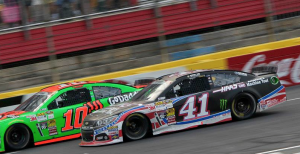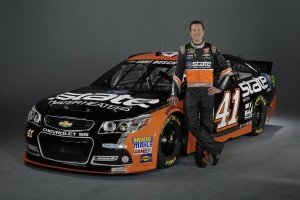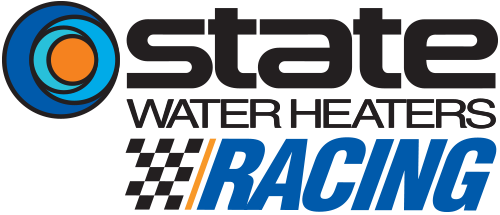In Order To Finish First, One Must First Finish
 There is an old adage in racing that states, “In order to finish first, one must first finish.” It’s a fairly simple concept, one that really doesn’t need much of an explanation at all.
There is an old adage in racing that states, “In order to finish first, one must first finish.” It’s a fairly simple concept, one that really doesn’t need much of an explanation at all.
Daytona (Fla.) International Speedway is one of only two racetracks on the NASCAR Sprint Cup Series circuit where restrictor plates are used. By definition, a restrictor plate is a device installed at the air intake of an engine to limit its power. The use of a restrictor plate both limits speed and increases safety, all in the spirit of providing an equal level of competition. Races at Daytona and its sister track, Talladega (Ala.) Superspeedway, are ones that, literally, anyone can win. Horsepower-choked engines require drivers to draft together, side-by-side at speeds approaching 200 mph.
Superspeedway events can produce wild, unpredictable racing with the possibility of large, multicar wrecks at any moment.
Some drivers elect to drop to the back of the pack and ride, waiting until the late stages of the race to make their move toward the front of the field. Other drivers will do whatever they can to stay at the front of the field throughout the race. Other drivers find themselves stuck in the middle, an area that can be somewhat of a disaster zone.
One driver will win the race. Most drivers typically finish. Others will be involved in the almost inevitable “big one” – a multicar accident that typically eliminates multitudes of drivers prematurely.
Kurt Busch, driver of the No. 41 Haas Automation Chevrolet for Stewart-Haas Racing (SHR), has been listed as running at the end of 27 of 28 career points-paying Sprint Cup starts at Daytona. Considering the unpredictability of the races run there, it is an incredible statistic. While he’s seemingly mastered the art of finishing Daytona races, it’s the finishing first part he’s yet to figure out. In fact, a superspeedway win is the only kind that has eluded him during his 16-year Sprint Cup career. With a victory this weekend, Busch would join an elite list of drivers who have won at every type of track on the Sprint Cup circuit: superspeedway, speedway, intermediate, short track and road course.
Busch enters Daytona this weekend in prime positon not only to build on his impressive st atistics at the famed 2.5-mile racetrack, but also to finally check the box and score a victory at a superspeedway. Busch has been listed as running in his last 19 races, and has only finished outside the top-15 once since being paired with crew chief Tony Gibson in late 2014.
atistics at the famed 2.5-mile racetrack, but also to finally check the box and score a victory at a superspeedway. Busch has been listed as running in his last 19 races, and has only finished outside the top-15 once since being paired with crew chief Tony Gibson in late 2014.
With the “win-and-you’re-in” Chase for the Sprint Cup Championship format, Busch doesn’t have to worry about where he’s running in relation to drivers he is challenging in the point standings. Nor does he have to make moves if he simply doesn’t feel that he’s in a position to do so safely. With two victories this season, Busch and the Haas Automation team have little to worry about in terms of making the Chase. They can head to Daytona focused solely on one goal – being in position near the front of the pack when it’s time to race for the checkered flag.
KURT BUSCH, Driver of the No. 41 Haas Automation Chevrolet SS for Stewart-Haas Racing:
What’s the toughest part of Daytona?
“To me, it’s the patience that’s required to run 400 or 500 miles at those tracks. As a racer, you want to be up front the whole race. At tracks like Daytona and Talladega, you have to be a little more calculating in how you run those races and where you position yourself for the early part of the race. It’s one of those days where ‘to finish first, you must first finish.’ So you end up driving a little defensively for the first 350 miles of the race, just kind of feeling out your car. Maybe you will test it a little bit by going to the front to see how you stack up against the other cars. But, after that, you are in defensive mode and just trying to take care of your equipment for that final dash. It’s all about patience.”
Talk about some of the challenges that restrictor-plate racing creates.
“It’s a high-speed chess game. The way the draft works, you’re racing against an invisible competitor. Something that’s kind of sneaky about Daytona and Talladega is pit road. It’s an easy place to find trouble.”
Describe the intensity of restrictor-plate racing.
“The intensity is very unique because it’s not as physically demanding, but you’re playing a mental chess game racing the draft, the other competitors. And sometimes you’re at the mercy of when the leader is running right up by the wall and all of us have to draft in the high lane and you can’t get that inside lane going and you don’t know why. There are so many frustrations that come up with restrictor-plate racing. Some days you find yourself there just to survive and, on others, you have the best car and you still didn’t win, and you’re left trying to figure out why. ”
What will it take for you to get a superspeedway victory this weekend?
“Restrictor-plate races turn into more of a crapshoot. You see if your number is going to come up and if you’re going to be the lucky guy at the end of the day. The way you have to stay patient all day, stay out of trouble and be on the lucky side of things, it’s a tough combination to line up and get exactly right. Over the years, I’ve had good finishes. I just haven’t been able to break through for a Sprint Cup win at a superspeedway. But, you really can’t expect to win. You have to find little things that will help you have an advantage at the end of the race.”

